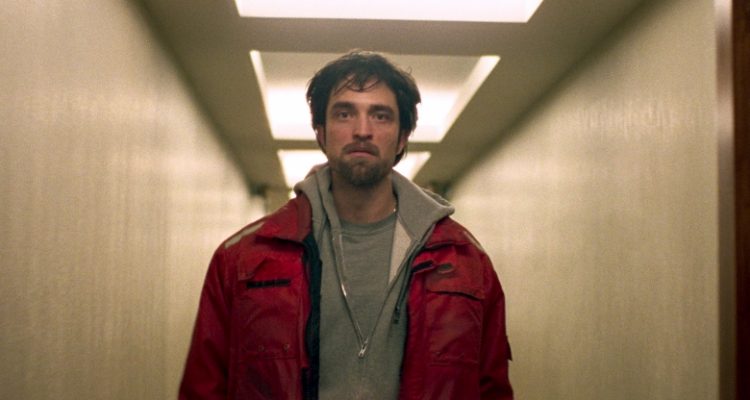The botched bank robbery is a well-worn genre staple, but has a heist ever gone quite so wrong to such electric, propulsive effect as in Josh and Benny Safdie‘s “Good Time“? Bouncing wildly off the screen like “Crank” with an arthouse pulse and the soulful eyes of a particularly loyal puppy, it’s a feat of sonic, visual and narrative engineering that confirms the Safdies’ arrival, after “Heaven Knows What,” as the beat filmmakers of the millennial generation. And in Robert Pattinson‘s central performance, these Kerouacs of current-day Queens find their Neal Cassady. After a long period of ascent in which the signal to noise ratio for the young actor has been consistently out of whack, here he turns in his first unequivocally commanding lead performance: bringing absolute commitment, wolfish energy and Method-y charisma. Robert Pattinson is, finally, fantastic.
He plays Connie, a young Queens native ferociously attached to his mentally challenged brother Nick, played by Benny Safdie, who is also credited as editor as well as co-director, and who wades right into the treacherous waters of playing developmentally challenged and somehow manages not to come across as condescending. As youth-oriented and energetic as their style is, the Safdies’ work is marked out by an unironic sincerity that gives their portrayals of the broken, the disaffected, the addicted and the ostracized, an unsentimental, unjudgmental eye-level authenticity. Simply by virtue of a comparatively sedate prologue and epilogue both unflinchingly focusing on Nick, as a kindly doctor (Peter Verby) tries to coax him out of himself, the dazzling high-octane drama of the interim is reoriented around a surprisingly touching and melancholic core.
READ MORE: Netflix & Yorgos Lanthimos Lead The Buzz On The Croissette
Connie is a quick-thinking opportunist who assumes that because he loves his brother most, he also knows what’s best for him. The brothers embark on a shortsighted and rather hare-brained bank robbery, that works out all too easily before a dye packet explodes, their getaway car crashes and they are suddenly on the run, literally red-handed. In the chase Nick is caught by the police, and placed in the kind of nightmarish holding cell that is reminiscent of the scathing depiction of the halfway house in “Heaven Knows What”. In Safdieworld, institutions are are the enemy. Connie tries to scrape together the money to make Nick’s bail, even enlisting his troubled older girlfriend Corey (Jennifer Jason Leigh), but by that time, Nick has been in a brutal fight and has been hospitalized.

So Connie’s plan switches to breaking the heavily bandaged Nick out of hospital custody instead, which he does via a series of clever and/or lucky ruses, before a further revelation (a funny moment that would be played for a laugh and abandoned in another screenplay but here is pivotal to the entire bleary second half of the film) sends the night spinning in an entirely new direction, involving a surly 16-year-old accomplice (played by one-to-watch newcomer Taliah Webster), a quick dye job, and a Sprite bottle full of LSD.
“Good Time” sees the Safdies reunite with cinematographer Sean Price Williams, who is shooting on 35mm for the first time. But where the constraints of film might hamper the expressiveness of a lesser digital DP, here Williams’ richly textured, up-close aesthetic is further liberated. The film is both viscerally spontaneous and entirely beautiful, with the night-time neons and low-lit interiors of various run-down Queens neighborhoods giving the glancing, choppy, fleet-footed chase narrative both grace and grit. Those qualities are then magnified by a terrific electro score from Oneohtrix Point Never (aka experimental musician Daniel Lopatin) which is by turns woozy, pulsating, and pounding. All of which reflects the altered-state, accelerating vibe as the night gets longer, the tale gets shaggier, and the bottle blonde Connie has nothing left in the tank but fumes, sour adrenaline, and bad luck.
READ MORE: Robert Pattinson Announces An Upcoming Project With ‘Christine’ Director Antonio Campos
A certain kind of energy is relatively easy to fake through editing and handheld shaky images. But what’s remarkable about the Safdies’ accomplishment here is that they also manage to keep the plot’s thrusters burning nitro, so that the antic camerawork, and Kalashnikov cutting feel justified by the story, rather than the other way around. Not that they’re entirely immune to the usual problem with the escalating disaster dynamics of the One Crazy Night genre: events have to line up just so, and unreliable people have to behave in prescribed ways in order for the film to keep going. But for the most part, Josh Safdie and Ronald Bronstein‘s screenplay either gets around these pitfalls or distracts from them, as even the most ostensibly contrived of situations is given a shot of plausibility by the offbeat, well-observed details of lower-middle and working class Queens life: a cellphone that only works when it’s plugged in, or a spare room in which a TV screen’s white-noise flicker has to suffice for illumination because of a broken ceiling light.

Nothing can keep picking up speed forever. And for the second half of the film there’s a palpably mounting discomfort as this fact bears down on us, making us flinch in anticipation of a spectacular crash. But actually, the film slows down gracefully, and with remarkable control considering the runaway-train momentum it had built up. Iggy Pop croons brokenly, “The pure always act from love, the damned always act from love” in the doomily romantic theme song that plays over the end credits, and it remind us that as pulse-pounding as the movie gets, it’s also gentle and brave in its depiction of fraternal affection. A high watermark in the fusion of genre and arthouse, and an anthemic, youthful blast of generational pop art, “Good Time” is a 100 minute-long string of fire emojis, that begins and ends with a heart. [B+/A-]
Check out the rest of our coverage from the 2017 Cannes Film Festival by clicking here.

